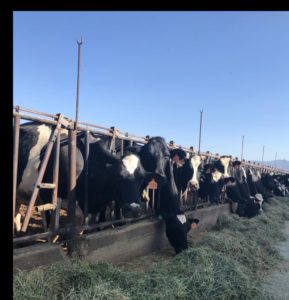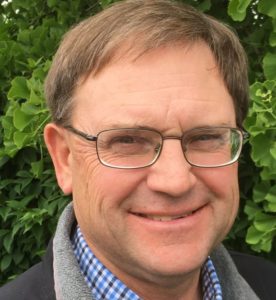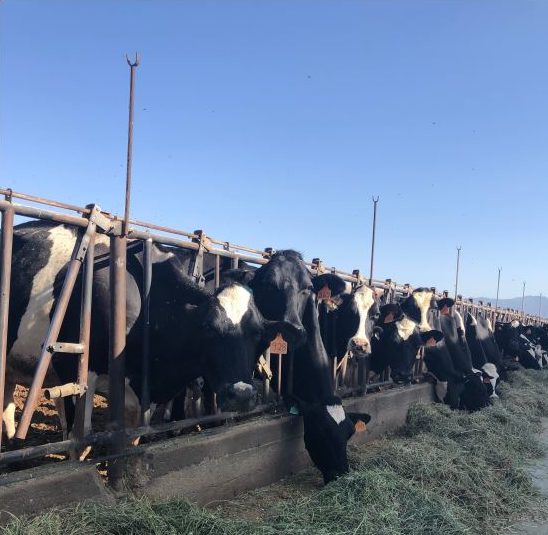By Geoff Vanden Heuvel, Milk Producers Council Director of Regulatory and Economic Affairs
The passage of the Sustainable Groundwater Management Act (SGMA) in 2014 set in motion a process that will forever influence and affect agriculture in California’s Central Valley. That process is well underway, and in my new position with Milk Producers Council, I am attending meetings and conferences with the intention to learn everything I can about how this is going. I thought I would share with you some initial first impressions. 
First of all, SGMA requires that every square foot of California sitting over groundwater be assigned to a Groundwater Sustainability Agency (GSA). Local communities had the choice to create their own GSA’s made up of some combination of local water agencies or other local government entities, such as a city. Areas that did not voluntarily create a GSA became the responsibility of the County where they were located. Amazingly, virtually every area in California complied with this requirement and is now part of a GSA.
“Critically Overdrafted” areas of California now have until 2020 to produce a Groundwater Sustainability Plan (GSP) that addresses eliminating what the law calls “Undesirable Results”. So, what are Undesirable Results? First, the law defines Undesirable Results as the chronic lowering of groundwater levels indicating significant and unreasonable depletion. Secondly, the law mentions a reduction of groundwater storage, followed by sea water intrusion, then degraded water quality and land subsidence, and finally an undesirable result can be the depletion of surface water.
This law is complicated and given the vast differences that exist in California, not only between coastal regions and the Central Valley, but also within regions and even neighborhoods, trying to implement this law is a huge challenge.
So where are we now? In the meetings I attend, I see very serious work being done by true professionals who are doing their best to identify how much water there is. They are gathering data and plugging it into groundwater simulation models. They are figuring out what they know, what they think they know and what they do not have the data to know. Getting good information is vital to making good decisions. What we are trying to measure is below ground and not visible, and because groundwater moves and also exists in various different strata deep underground, it will take a long time to really understand the full picture with regards to the current groundwater conditions of each region.
Some regions have experienced subsidence, which is the permanent lowering the surface of the ground due to depletion of the water under the ground. This situation can cause significant damage to the infrastructure of the community causing very real economic impacts. It seems likely to me that those subsidence areas will be the most proactive in putting together plans and rules that will address the subsidence issue.
In other areas, trying to define a minimum groundwater threshold becomes more subjective. At what point does the lowering of groundwater levels become “chronic, significant and unreasonable?” It seems to me that this is subject to interpretation and in fact the law does assign the duty to make that interpretation to the local GSA’s, who must do that in agreement with their neighbors.
Many GSA consultants are at a point where they are beginning to put up preliminary recommendations about these minimum thresholds. It is important that they do that, but it is equally important that the local GSA boards, made up of real people who will be impacted by these thresholds understand the implications, including costs, of these proposed standards. It is very important to remember that SGMA requires a plan but it does not expect or require that “sustainability” be achieved right away. Critically Overdrafted regions have until 2040 to achieve that goal and that reality should be taken into account as the GSA’s put their plans together.
In the meantime, what needs to happen? In addition to putting in place the monitoring networks that will provide much better data about what is happening underground, conservation and capturing more water has to be part of the strategy.
Most of the surface water that is easy to capture has already been spoken for and belongs to somebody. There really is only one major tranche of water in California that is still available to be put to beneficial use. It is that water that appears two or three years out of 10 when we have those very wet winters which create flood flows. Putting in place the infrastructure to capture those flows is the challenge worthy of our commitment.
Putting infrastructure in place to slow those flows up and disperse them broadly so they can be recharged into the aquifer is expensive and has seemed inefficient in the past because in most years it sits idly by. But here is where the State can be most helpful. While we all get frustrated by the restrictions the state and environmental laws have put in place that limit the delivery capability of the major State and Federal water projects, we should not let that frustration prevent us from coming up with projects that will capture those flood flows and percolate them into the ground and ask the State to help us pay for them. There are hundreds of millions of dollars in Proposition 3 on the November ballot to help the Central Valley do these types of projects. I believe that is just the beginning of what will be available over the next 20 years as we wrestle with SGMA.
As I have traveled through the Valley attending meetings over the past six weeks, I am incredibly impressed by the beauty and enormity of the Central Valley. The vineyards, fields and orchards look lush and green and stretch for miles upon miles. The agriculture industry that has been built here is truly amazing. I do not think our coastal neighbors have any idea about the incredible value the Central Valley brings to California, the country and the world through the amazing products that are grown here.
SGMA at its core is about allocating pain. And since SGMA does not change any of the water priority law that has existed for decades in California, that pain is not equally dispersed. We need to work together to minimize as much as possible that pain while taking every opportunity to maximize the efficient use of the water we have. Will we be up to the challenge? Time will tell, but from what I see so far, I am hopeful that we will.
Geoff Vanden Heuvel is Director of Regulatory and Economic Affairs for Milk Producers Council. During his  39-year career as a dairy farmer in Chino in Southern California, he served on the Chino Basin Water Master Board representing agriculture for 20 years and the Chino Basin Water Conservation Board for 28 years. Following his retirement from dairy farming in June 2018, Geoff and his wife moved to Tulare in Central California.
39-year career as a dairy farmer in Chino in Southern California, he served on the Chino Basin Water Master Board representing agriculture for 20 years and the Chino Basin Water Conservation Board for 28 years. Following his retirement from dairy farming in June 2018, Geoff and his wife moved to Tulare in Central California.






























